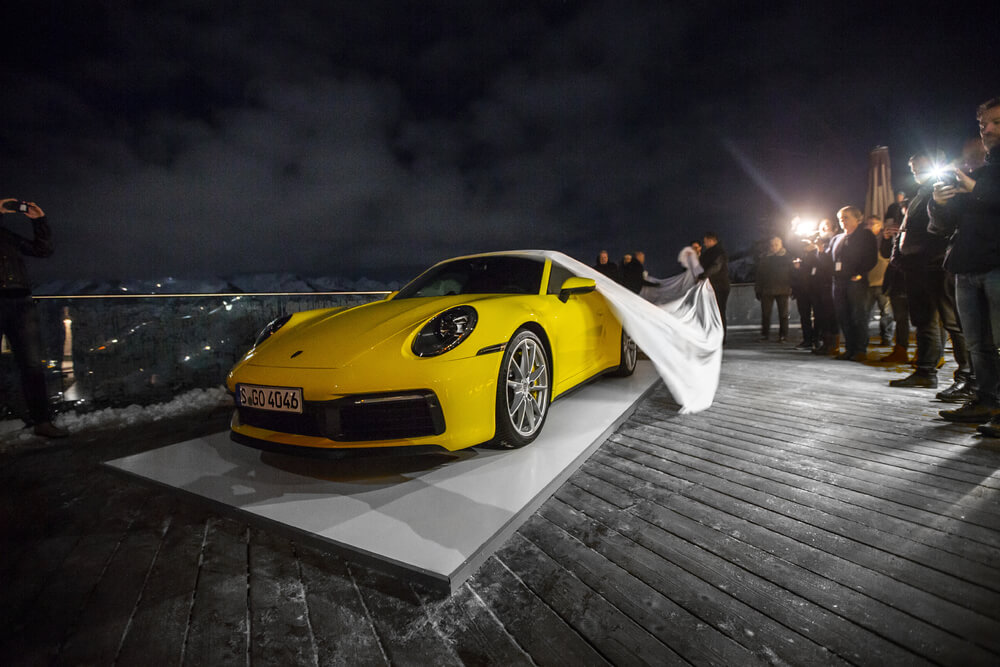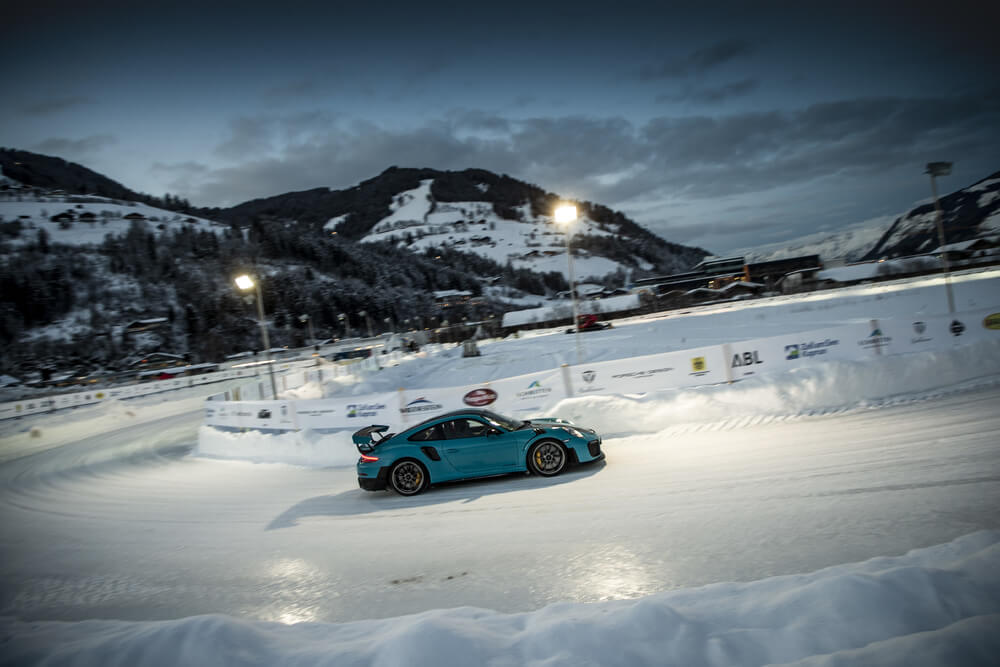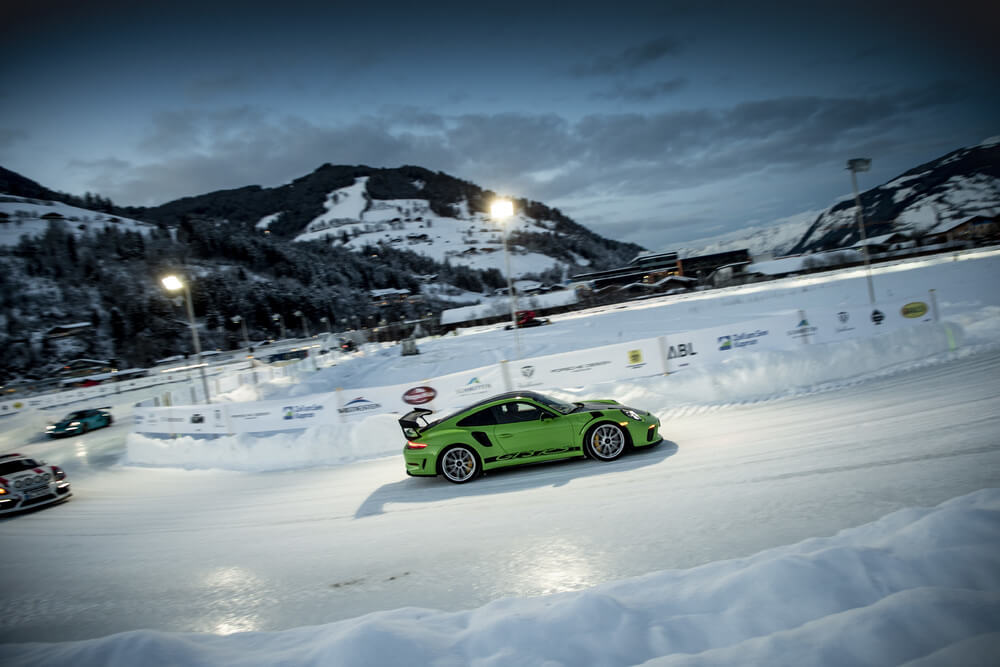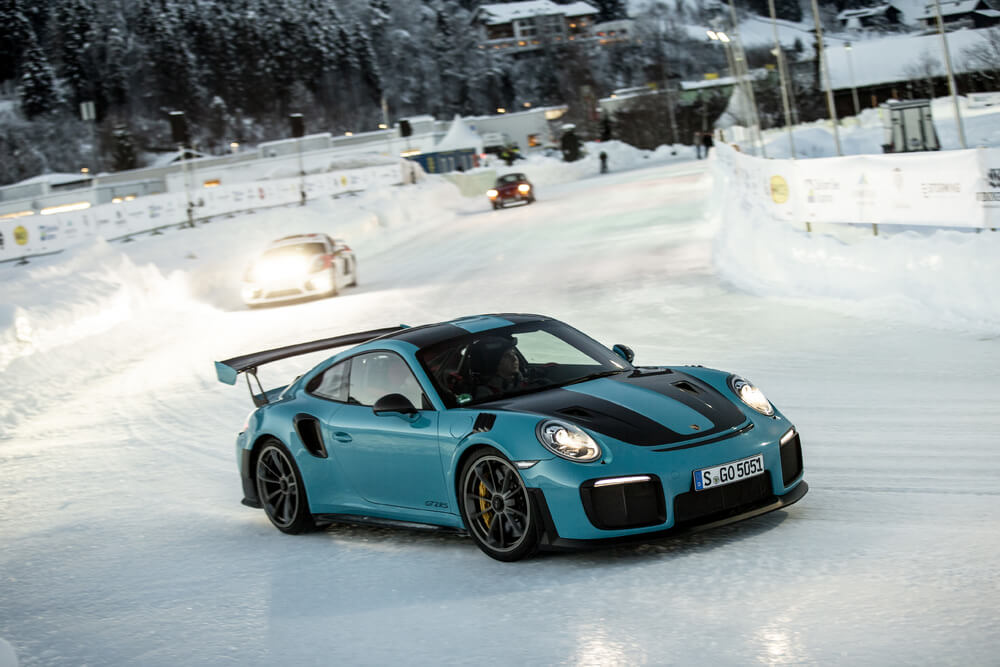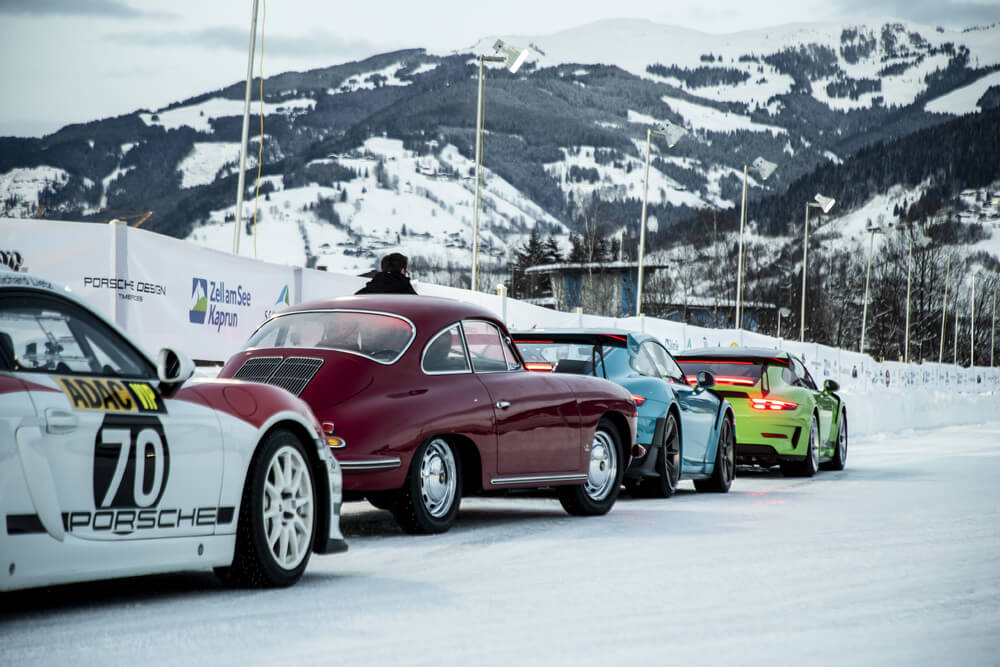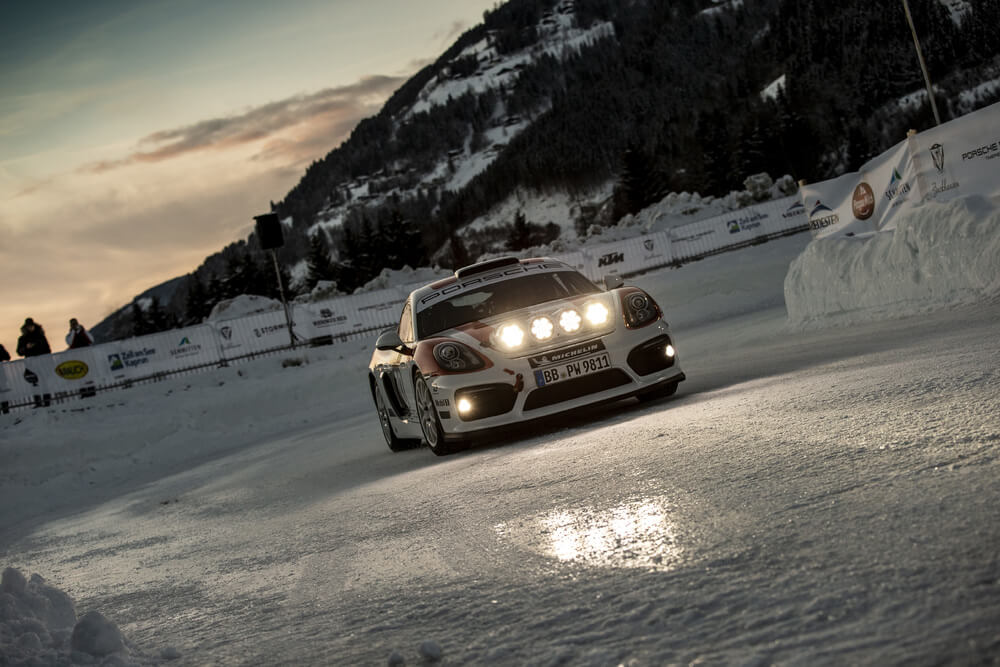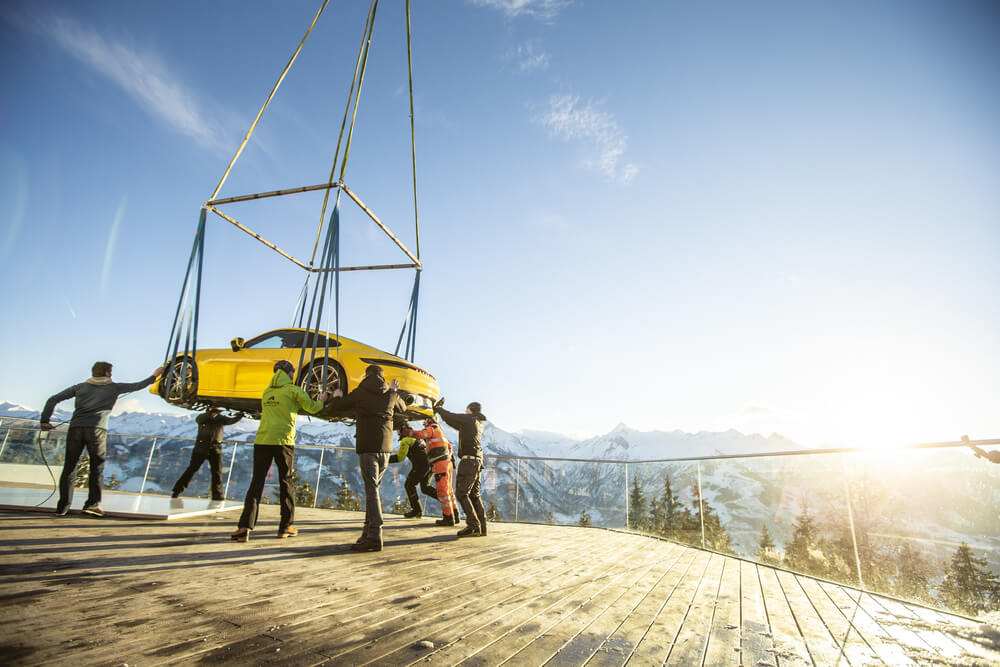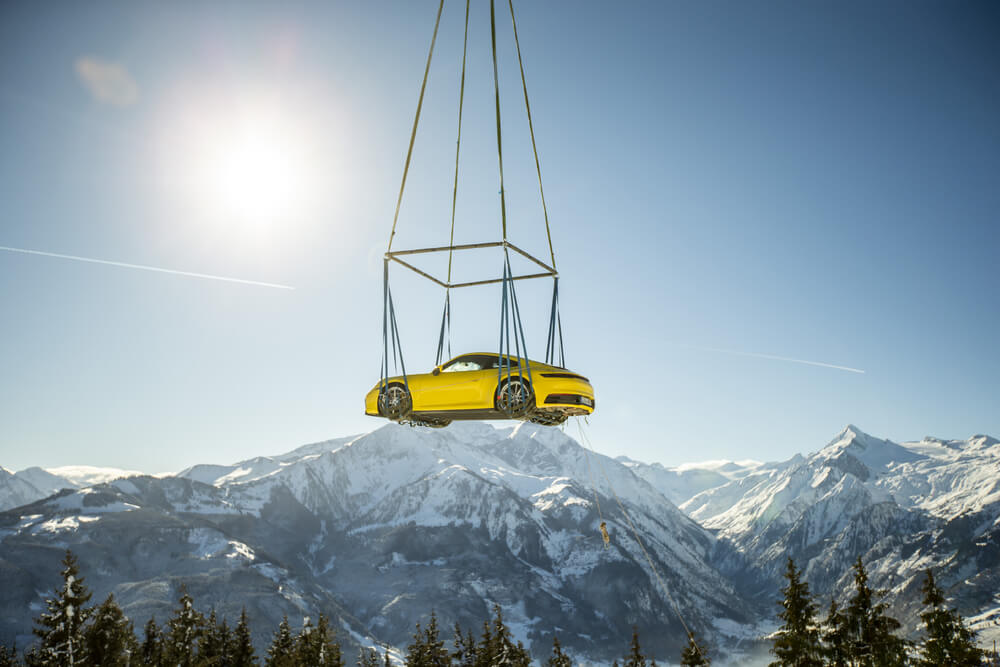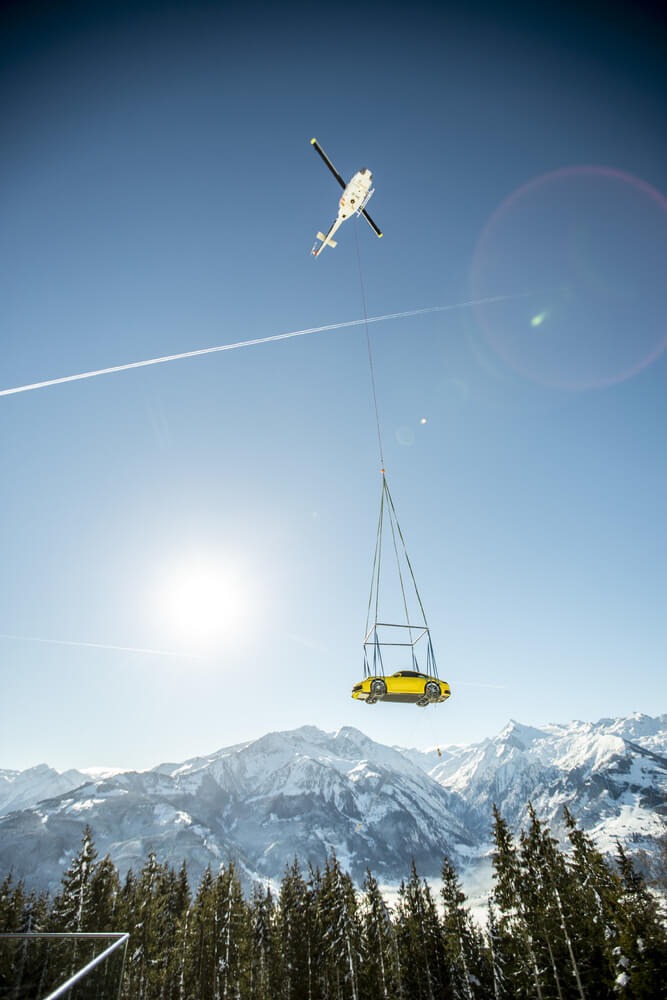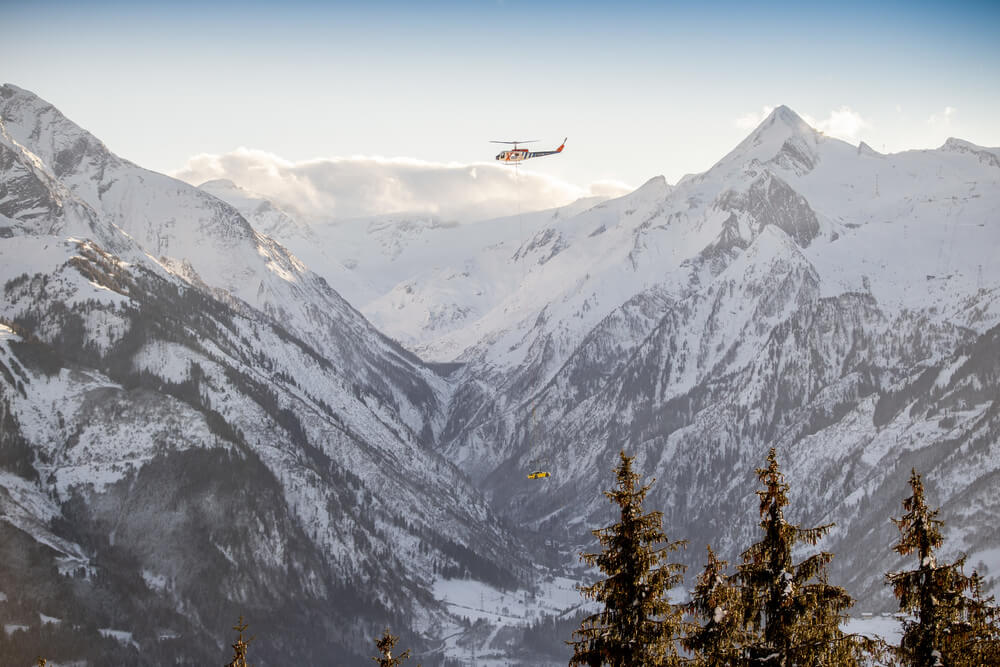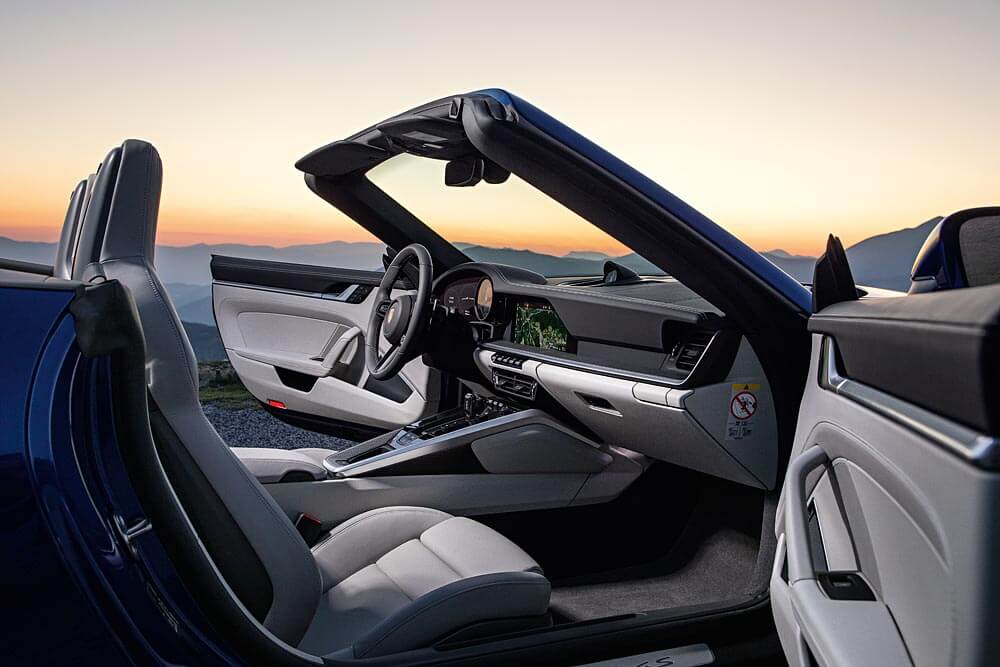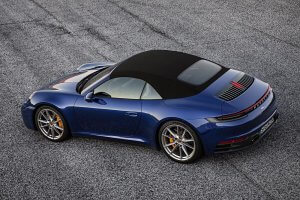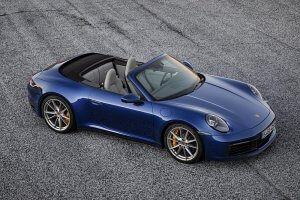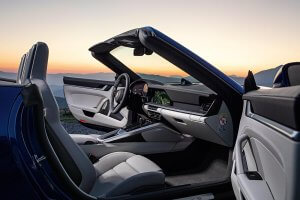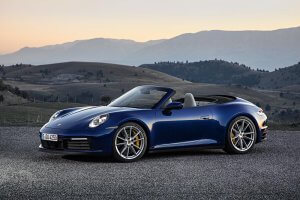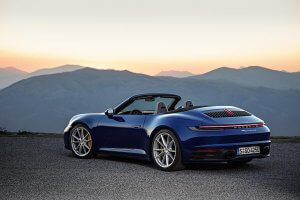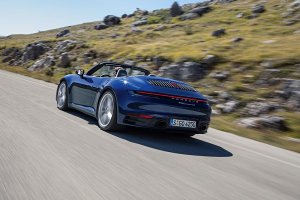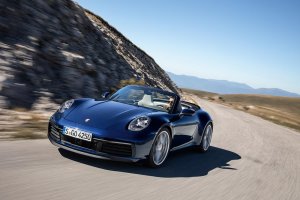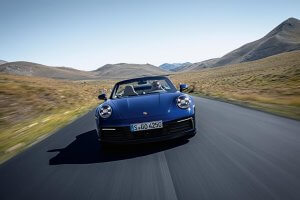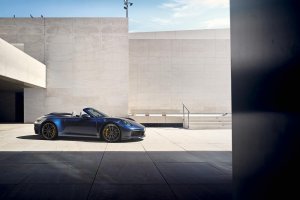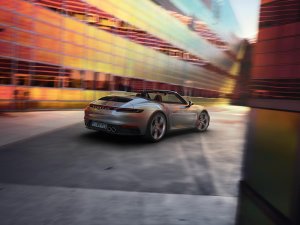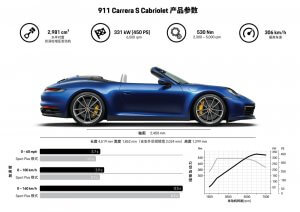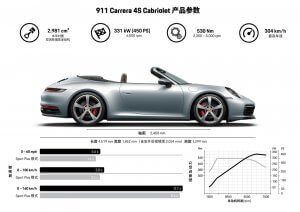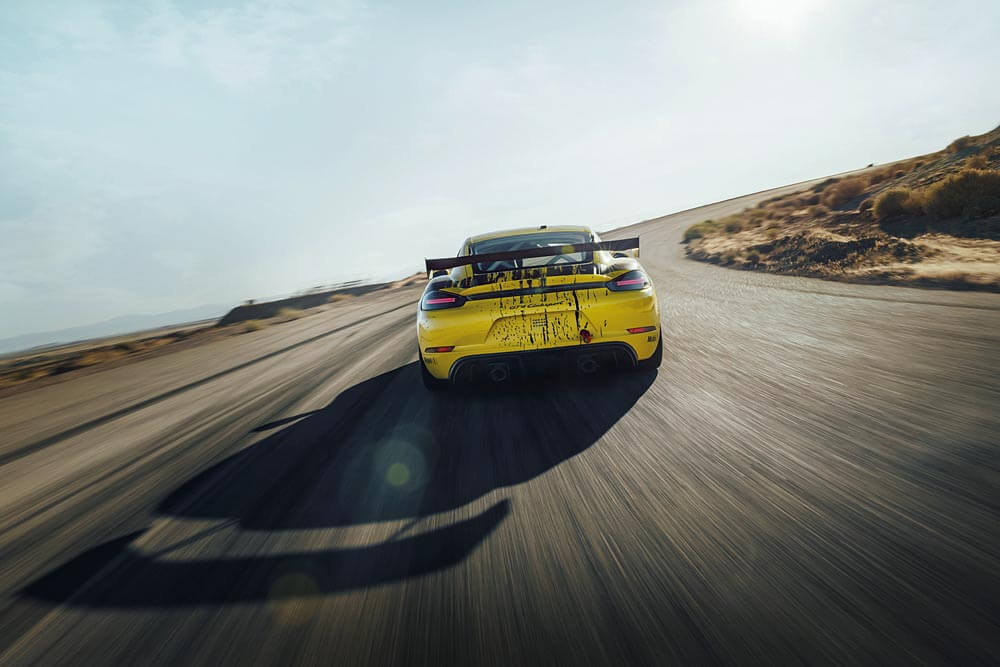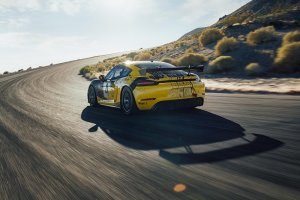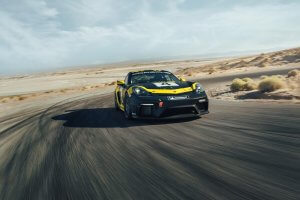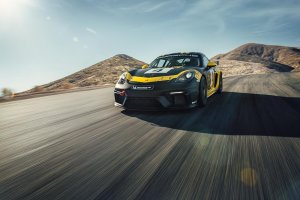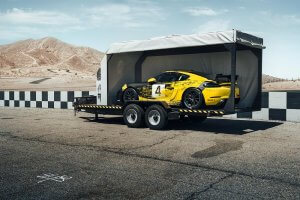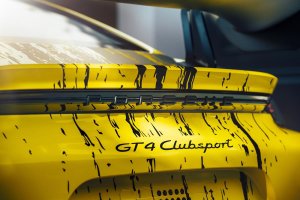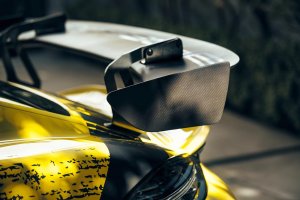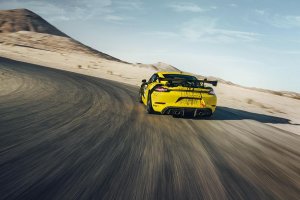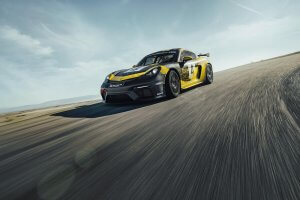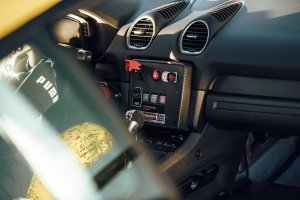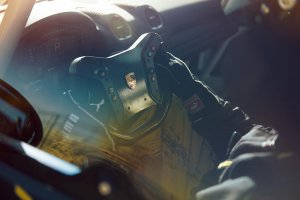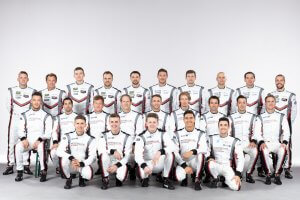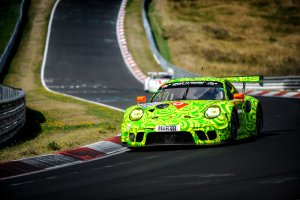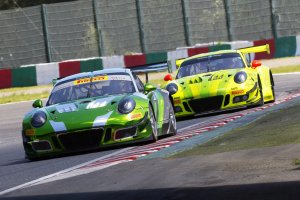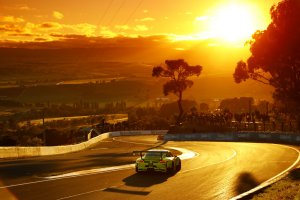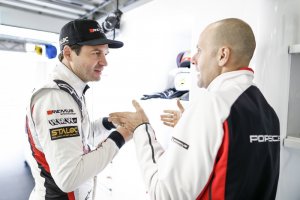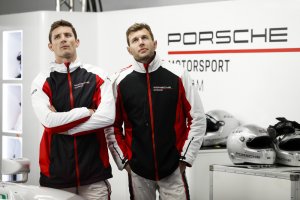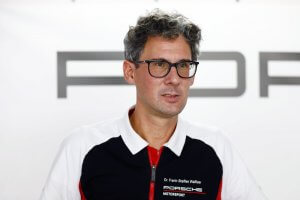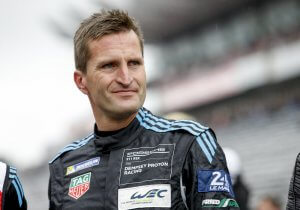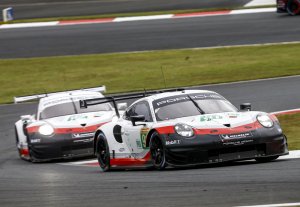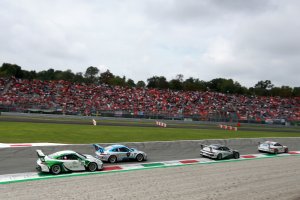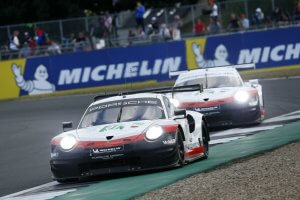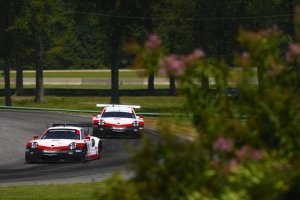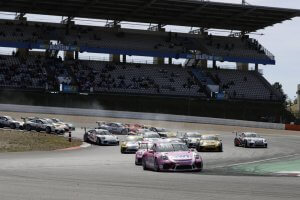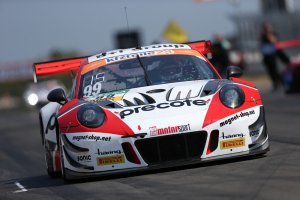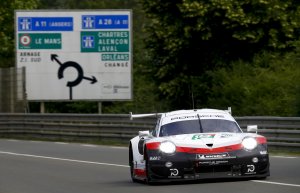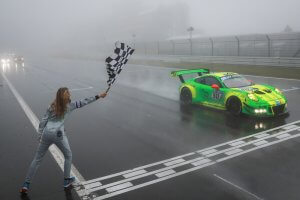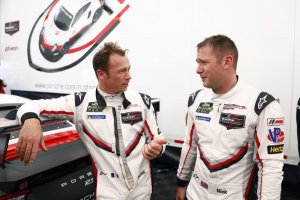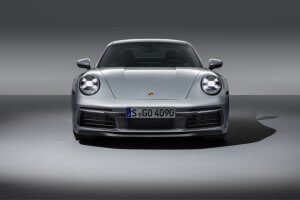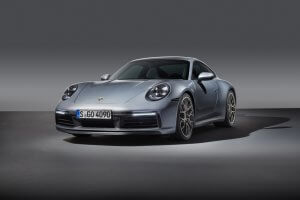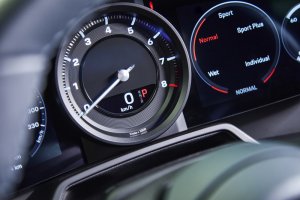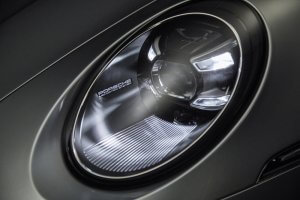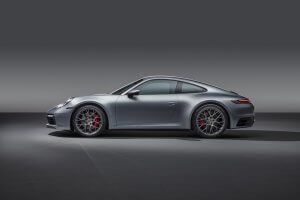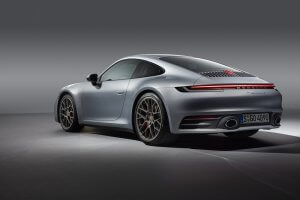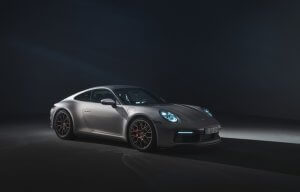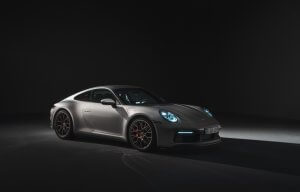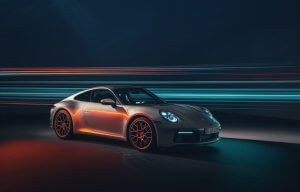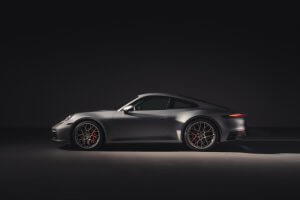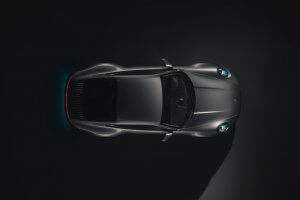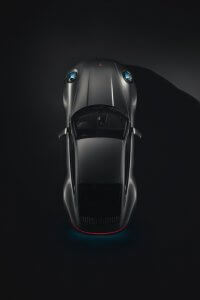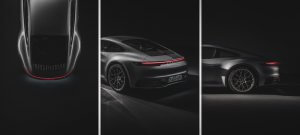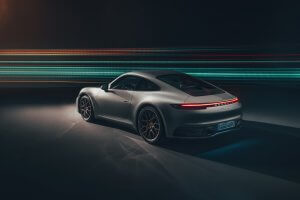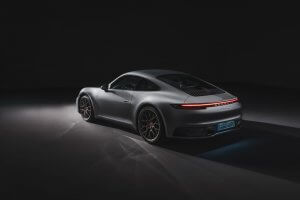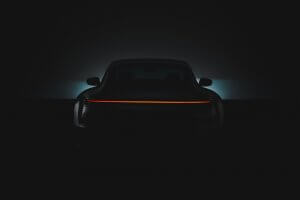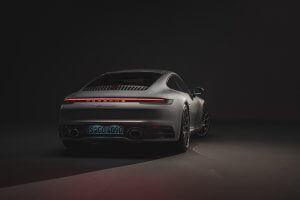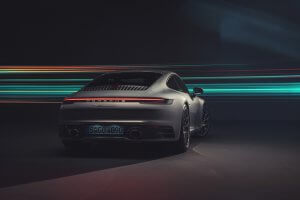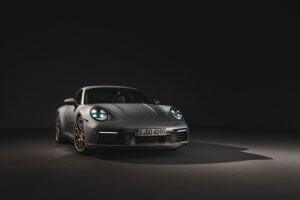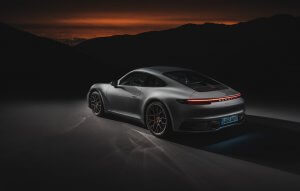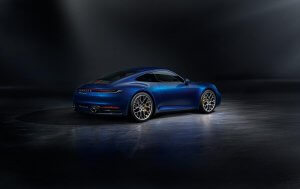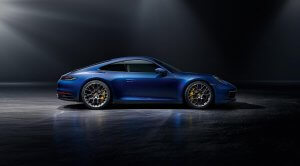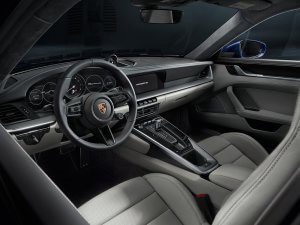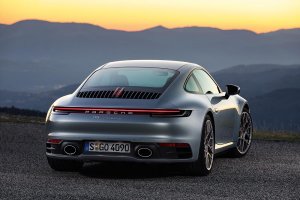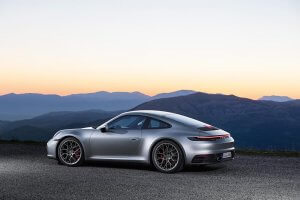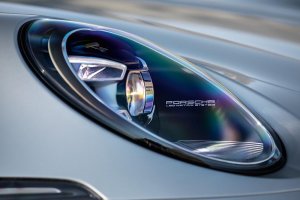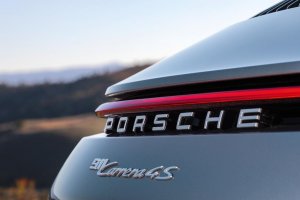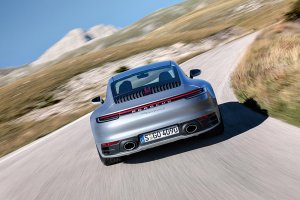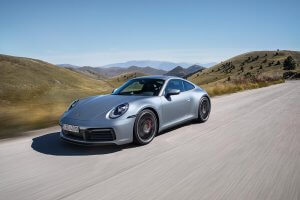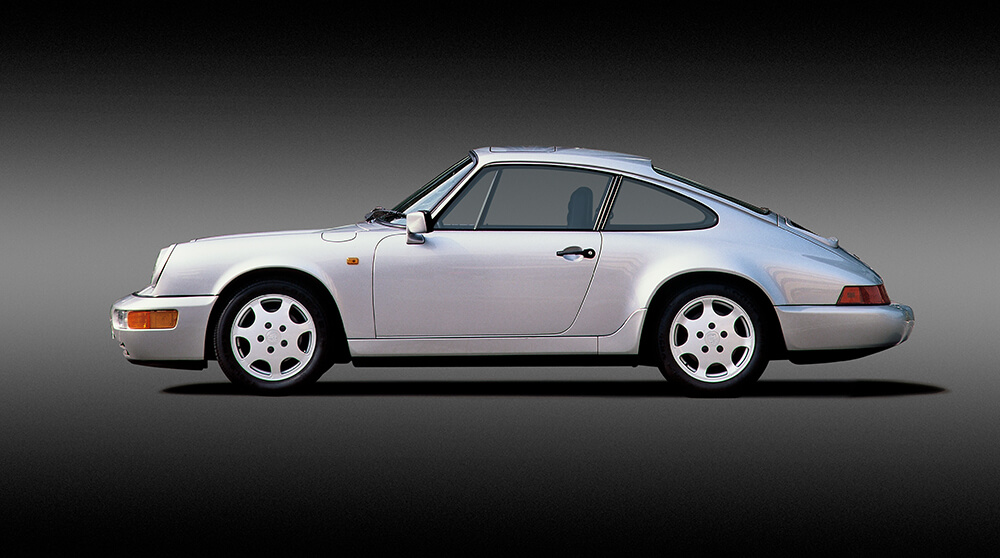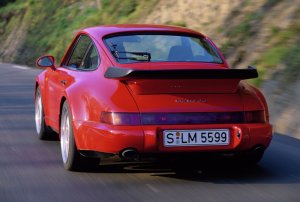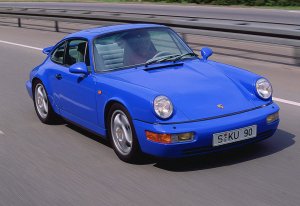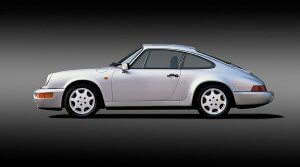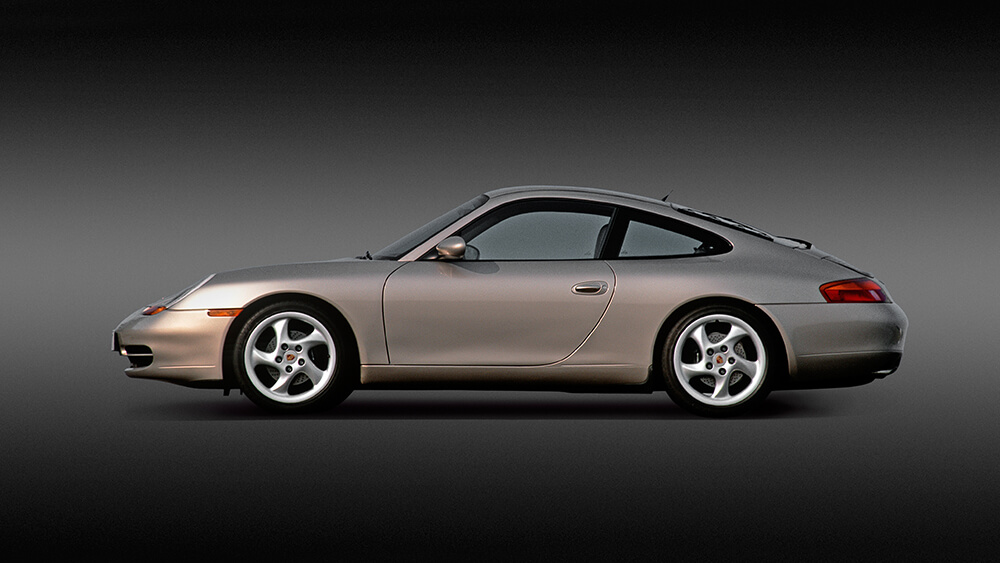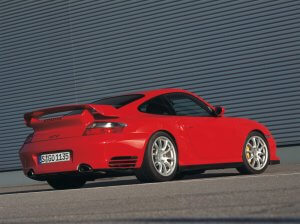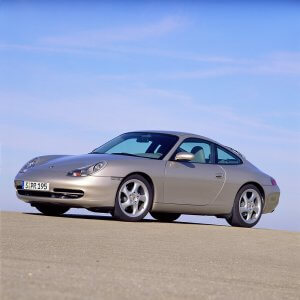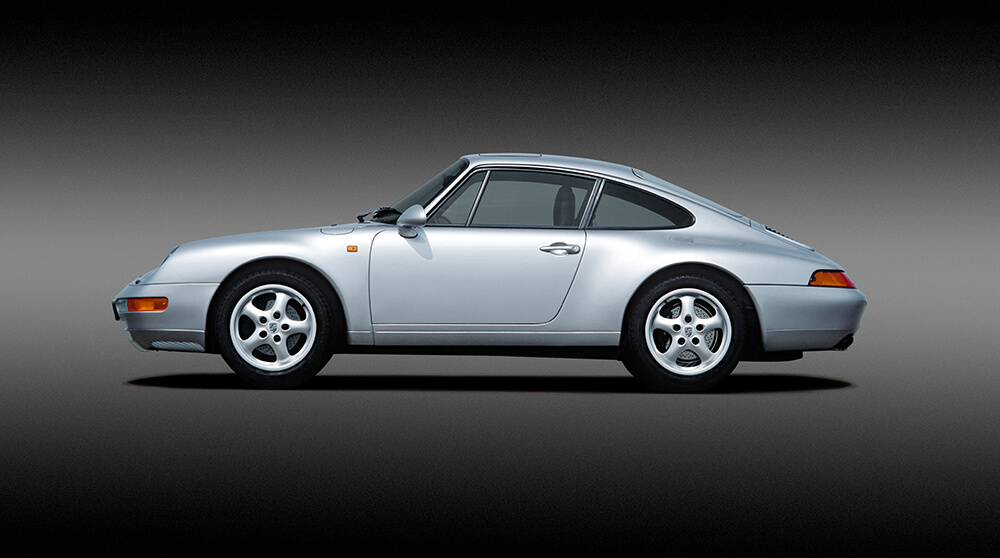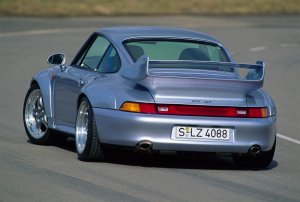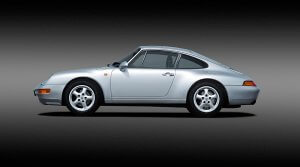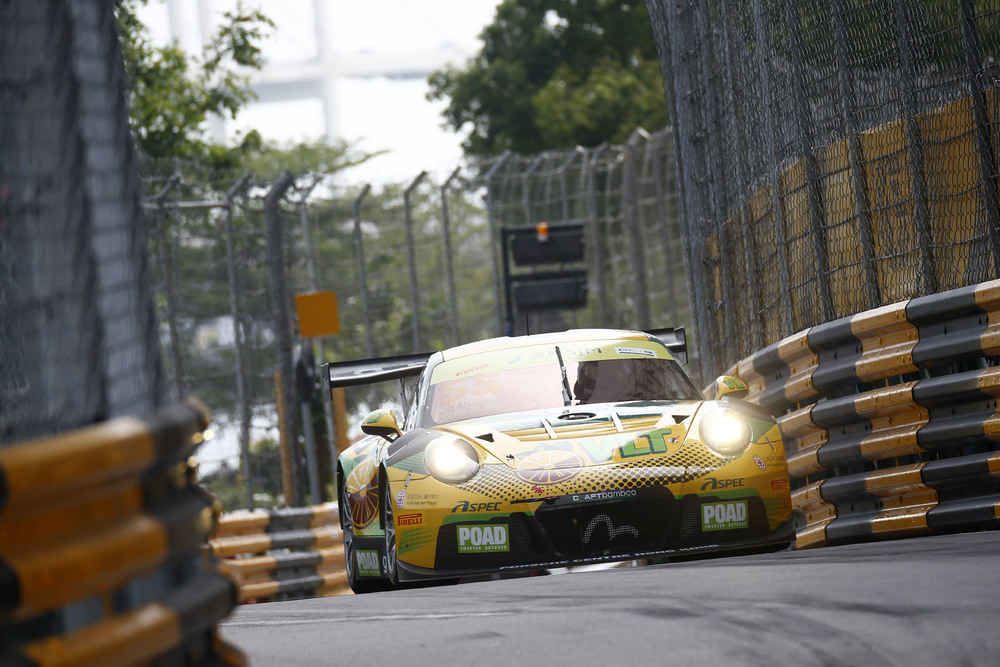Three years after the premiere of the first Cayman GT4 Clubsport, Porsche now unveils its successor. The new 718 Cayman GT4 Clubsport represents a consequent further development of the successful model from Weissach.
In developing the new 718 Cayman GT4 Clubsport, the focus was put not only on further improved driveability and faster lap times but also on the sustainable use of raw materials. The 718 Cayman GT4 Clubsport is the first ever production race car to feature body parts made of natural-fibre composite material. The driver and passenger doors and the rear wing are made of an organic fibre mix, sourced primarily from agricultural by-products such as flax or hemp fibres and feature similar properties to carbon fibre in terms of weight and stiffness.
Powering the 718 GT4 Clubsport is a 3.8-litre flat-six engine producing 425 bhp (313 kW). Compared to its predecessor, this represents a 40 bhp increase in performance. The power is transferred to the rear wheels via a Porsche dual-clutch gearbox with six gears and mechanical rear axle differential lock. The lightweight spring-strut front suspension is taken from its big 911 GT3 Cup brother. The impressive racing brake system features steel brake discs all round measuring 380 mm in diameter.
Tipping the scales at 1,320 kg, the 718 Cayman GT4 Clubsport, delivered ex-works with a welded-in safety cage, a racing bucket seat as well as a six-point harness, is a real lightweight.
For the first time, the near-standard mid-engined racer comes in two versions ex-works for global track driving excitement: the “Trackday” model and the “Competition” variant for national and international motor racing. Only the “Competition” edition is offered in the UK.
The “Competition” model – which is available in the UK via the Porsche Cars GB Motorsport department – features a raft of details relevant for racing. The shock absorbers can be adjusted in three stages. The safety fuel tank with a capacity of 115 litres is suitable for long-distance events. Thanks to a brake balance system, the balance bias can be infinitely adjusted between the front and rear axle. An integrated air jack system guarantees fast pit stops. The quick-release racing steering wheel adopted from the 911 GT3 R ensures a range of adjustment options for the individual needs of the drivers. An automatic fire extinguishing system adds another safety feature for the racetrack. The 718 Cayman GT4 Clubsport “Competition” is priced at £130,300.00 plus VAT, and is not homologated for road use.
“The new Porsche 718 Cayman GT4 Clubsport possesses significantly more racing genes than its successful predecessor,” says Porsche’s head of motorsport Fritz Enzinger. “The power of the engine has increased considerably. At the same time, we were able to increase the downforce and the cockpit is now even better suited to drivers’ needs. I’m confident that we can build on the excellent sales figures of the predecessor, of which we have delivered 421 cars.”
The car is available to order immediately and will be delivered to teams and drivers around the world from February.
Technical description Porsche 718 Cayman GT4 Clubsport (Type 982)
Concept
• Single-seater, near-standard production-based race car, not road homologated
Engine
• Aluminium six-cylinder mid-positioned boxer engine with rigid mounting
• 3,800 cc; stroke 77.5 mm, bore 102 mm
• Max. power: 425 bhp (313 kW ) at 7,500 rpm
• Max. rpm: 7,800 rpm
• Max. torque: 425 Nm at 6,600 rpm
• Compression ratio: 12.5:1
• Racing optimised water cooling with thermal management for engine and gearbox
• Four-valve technology with adjustable camshaft phasing and variable valve timing VarioCam Plus
• Fuel quality: Super Plus unleaded, minimum 98 octane
• Racing optimised electronic engine management (Continental SDI 9)
• Integrated dry sump lubrication
• 100-cell metal catalytic converter complying with DMSB specifications
Transmission
• Rear wheel drive
• 6-speed PDK gearbox with rigid suspension and electronic control unit optimised for racing
• Reinforced dual mass flywheel
• Internal pressure oil lubrication with active oil cooling
• Differential lock optimised for racing
Bodywork
• Lightweight body in aluminium-steel composite construction
• Welded-in roll cage, certified according to FIA Art. 277
• Front bonnet with quick release fasteners
• Rear hood with quick release fasteners
• Fixed rear wing with “swan neck” mount made of natural-fibre composite materials, including the sideblades, black aluminium wing supports with integrated carbon fibre Gurney flap
• Driver and co-driver doors of natural-fibre composite materials
• Roof including escape hatch, certified according to FIA Art. 275a
• Recaro race bucket seat with longitudinal adjustment and padding system, adjustable to the individual needs of the drivers (in accordance with FIA Standard 8862/2009 – the latest FIA requirements)
• Three-piston air jack system
• Provision for safety net
• FIA-certified towing loops, front and rear
• Motorsport centre console with enhanced functionality and adapted usability
• Six-point safety harness
• 115-litre FT3 safety fuel cell with “Fuel Cut Off” safety valve complying with FIA regulations
Suspension
Front axle:
• MacPherson suspension strut, adjustable in height, camber and track
• Forged suspension links: optimised stiffness, double shear mounting, high-performance spherical bearings
• 5-bolt wheel hubs
• Racing 3-way shock absorbers with rebound and 2-stage compression adjustment, high and low speed
• Electromechanical power steering with variable steering ratio
• Anti-roll bar, 3-hole design
Rear axle:
• MacPherson suspension strut, adjustable in height, camber and track
• Forged suspension links: optimised stiffness, double shear mounting, high-performance spherical bearings
• 5-bolt wheel hubs
• Racing 3-way shock absorbers with rebound and 2-stage compression adjustment, high and low speed
• Adjustable blade-type anti-roll bar
Brake system
Front axle:
• Aluminium, mono-bloc six-piston racing callipers with “Anti Knock Back” piston springs
• Steel brake discs, multi-piece, ventilated and grooved, 380 mm diameter
• Racing brake pads
• Brake balance adjustment via a balance bar system
Rear axle:
• Aluminium, mono-bloc four-piston racing callipers with “Anti Knock Back” piston springs
• Steel brake discs, multi-piece, ventilated and grooved, 380 mm diameter
• Racing brake pads
• Brake balance adjustment via a balance bar system
Electrics
• COSWORTH instrument cluster ICD with integrated data logger
• Upgraded fault diagnosis with PIWIS motorsport tester
• Porsche Track Precision Race App
• Integrated lap trigger via GPS signal
• Electronic throttle system
• Lightweight lithium-ion (LiFePo) battery, 60 Ah, leak-proof, mounted in passenger footwell
• Emergency cut-off switch in cockpit and outside left of the windscreen
• Driving stability system PSM (Porsche Stability Management) with ABS, traction Control (TC) and Electronic Stability Control (ESC), able to be completely deactivated
• Tyre pressure monitoring system (TPMS)
• Central fire extinguishing system in accordance with FIA regulations
• Air conditioning
• Electric wing mirror adjustment
• Multifunctional CFRP motorsport steering wheel with pit speed limiter and quick release coupling
• Centre console with map switch to adjust the ABS, ESC, TC and switch between preset tyre circumferences
Weight/dimensions
• Total weight: 1,320 kg
• Total length: 4,456 mm
• Total width: 1,778 mm
• Total height: 1,238 mm
• Wheelbase: 2,456 mm
Rims/Tyres
Front axle:
• One-piece light-alloy forged wheels in new weight-optimised rim design, 9J x 18 offset 28 with 5-bolt mounting
• Delivered with Michelin transportation tyres, dimension: 25/64-18
• Michelin slick/wet tyres, dimension: 25/64-18
Rear axle:
• One-piece light-alloy forged wheel in new weight-optimised rim design, 10.5J x 18.5 offset 53 with 5-bolt mounting
• Delivered with Michelin transportation tyres, dimension: 27/68-18
• Michelin slick/wet tyres, dimension: 27/68-18
Colours
• Water-based paint
• Exterior: white C9A
• Interior: white filler-coat, without lacquer
Delivery
Starting in February 2019
